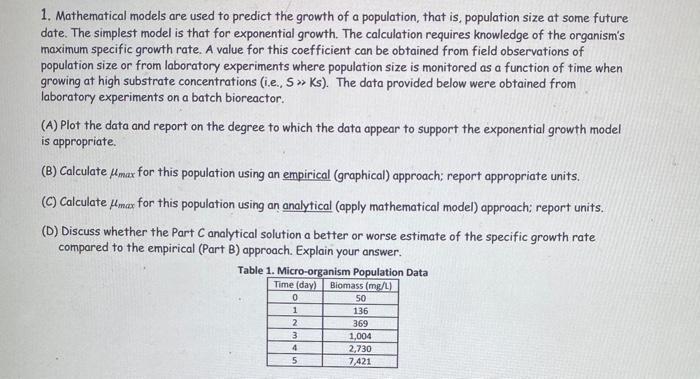Answered step by step
Verified Expert Solution
Question
1 Approved Answer
1. Mathematical models are used to predict the growth of a population, that is, population size at some future date. The simplest model is

1. Mathematical models are used to predict the growth of a population, that is, population size at some future date. The simplest model is that for exponential growth. The calculation requires knowledge of the organism's maximum specific growth rate. A value for this coefficient can be obtained from field observations of population size or from laboratory experiments where population size is monitored as a function of time when growing at high substrate concentrations (i.e., S Ks). The data provided below were obtained from laboratory experiments on a batch bioreactor. (A) Plot the data and report on the degree to which the data appear to support the exponential growth model is appropriate. (B) Calculate max for this population using an empirical (graphical) approach; report appropriate units. (C) Calculate max for this population using an analytical (apply mathematical model) approach; report units. (D) Discuss whether the Part C analytical solution a better or worse estimate of the specific growth rate compared to the empirical (Part B) approach. Explain your answer. Table 1. Micro-organism Population Data Time (day) Biomass (mg/L) 0 50 1 136 2 369 3 1,004 4 2,730 5 7,421
Step by Step Solution
There are 3 Steps involved in it
Step: 1

Get Instant Access to Expert-Tailored Solutions
See step-by-step solutions with expert insights and AI powered tools for academic success
Step: 2

Step: 3

Ace Your Homework with AI
Get the answers you need in no time with our AI-driven, step-by-step assistance
Get Started


